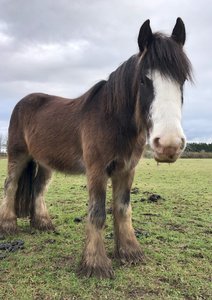
What is Feather?
Feathered legs on horses, also known as feather, are a characteristic of certain breeds and require specific care to maintain their health and prevent issues like mud fever and feather mites. In basic terms, "feathered" means that a horse has ground-length hair completely around the hoof.
Long feathers can be challenging to care for (especially in muddy conditions) but can also be very rewarding and look beautiful! Thankfully, there are many options to help with feather care, so we have compiled a list of helpful tips and information to help with keeping your horse or pony’s legs in tip top condition.
Feathered legs can make it more difficult to spot problems that may occur and it is important to be able to monitor the condition of your horse’s tendons, ligaments and skin underneath the hair. Horses with feathered legs may be more prone to leg mite infections and other conditions so they require routine maintenance care to be on top of any issues.


A well balanced diet
A well-balanced diet will help to maintain healthy hair-growing habits. There is conflicting advice regarding which supplements may help or irritate different skin conditions so you are advised to carry out some research into what is best suited to the individual horse and their needs. However, there is an overall consensus that Linseed provides high levels of Omega-3 fatty acids encouraging coat condition and skin health so can be of benefit to feathered horses or those with itchy skin. Also that a low sugar diet helps as a high sugar and starch diet is believed to attribute to further irritation.
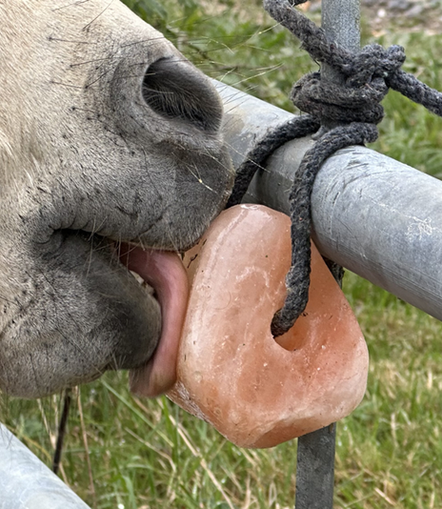
Routine grooming
Some types of mite and lice will feed on dead skin cells so it is important to keep them free of scurf as the feeding and crawling action of the mites causes irritation, making the horse itchy. Gently comb or brush horse’s feathers routinely to prevent tangles and remove any build-up of dirt and dead skin cells. Please remember it is important to be gentle so you are not compromising the skin and potentially making it more prone to infections. Any tangles, burrs or stickers in the feathers can be removed by adding a grooming oil or detangler and working the knots out gently. Look out for products that also have anti-fungal properties. Mineral oil (pig oil) and sulphur has been in use for many years to help maintain feathered horses legs and will assist in managing feather mites.
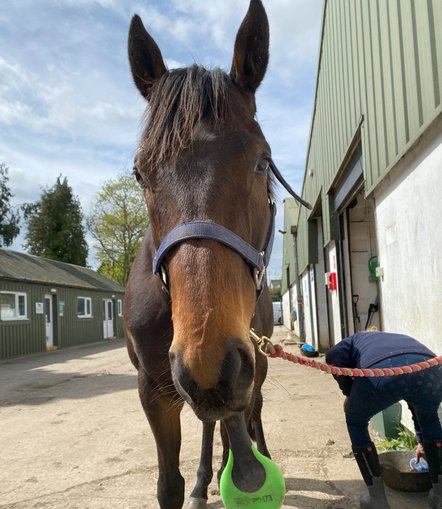
Washing feathers
Clean the feathers with a gentle shampoo, we would recommend doing a patch test before applying a new product to your horse. Only wash the legs if needed as excessive washing can damage the skin causing other issues, a wash every couple of weeks should be enough and it is important to thoroughly but gently towel-dry the feather afterwards too. There are many products that have anti-dandruff and anti-fungal properties and may also protect against parasites and insects. A coating of oil post washing/drying can be effective for keeping the legs clean as mud cannot stick and slides off more easily. Avoid oiling in the summer months as it can cause burning.
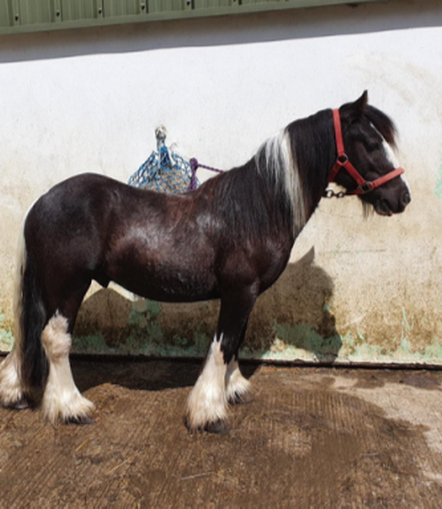
Clipping
Feathered legs tend to have many long straggly hairs that grow up the legs and over the knees and hocks, front and back. These spikey hairs can be trimmed with your clippers used in the SAME direction as the hair grows to tidy up the legs. The feather may help protect the skin from damage, or it may be the case that clipping them short is required, occasionally clipping off the feather can cause more irritation, so it is best to talk to your vet if unsure of the best course of action. If clipping the feathers off is required then it is recommended not using the shortest setting as it is good to leave some hair coverage for protection of the skin and prevent irritation from the action of the clippers and clipper oil.


Problem spotting
You may see a horse repeatedly stomping their legs (mostly hinds) onto the floor, this is a sign that there is a problem causing the horse to be extremely itchy and in discomfort. They will chew at their own legs, either when standing or laying down, and will rub them on items such as gates, fences and anything solid they can get to. If left untreated this scratching will lead to self-harm and bloody areas will be visible on the horses feathers.

Mud Fever
Pastern dermatitis, also known as mud fever or greasy heel. This is a collection of different conditions and can have many different causes such as a bacterial or fungal infection, parasites such as feather or mange mite, injuries, contact with irritants, photosensitivity etc. The biggest risk factor is over wetting of legs which can compromise the skin health. Pastern dermatitis can affect all breeds of horses, not just those with heavy feather.
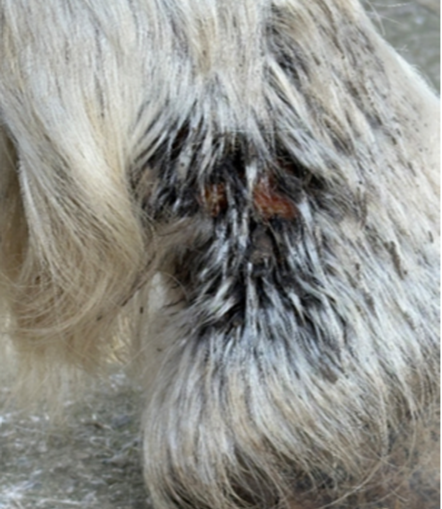
CPL
CPL (chronic progressive lymphedema) is a condition caused by a buildup of lymph fluid in the lower legs that result in progressive swelling, and a lack of elastin which combined cause weakening of the skin, this will lead to skin folds, thickening and nodules developing. This in turn makes the horses very susceptible to secondary infections and parasite infestation. This is a progressive condition with no cure so routine treatment is necessary to slow progression and manage symptoms.
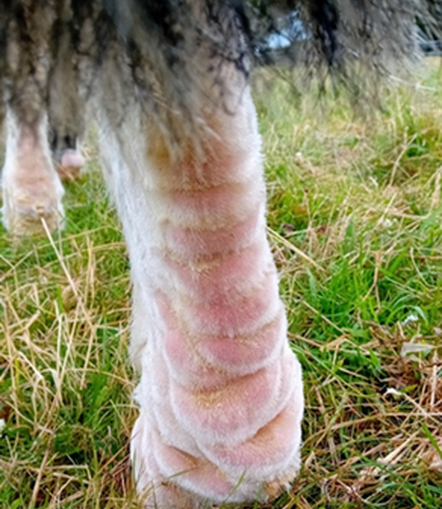
Hyperkeratosis
Hyperkeratosis, also known as Mallenders and Sallenders. This is an excessive production of keratin (protein found in hair and hooves) and is manifested by excessive keratinization of the skin. The two most likely areas for this problem to occur are the back of the knee (Mallenders) or the front of the hock (Sallenders). These thickened and scabby areas cause a great deal of pain so may be difficult to resolve, but left untreated will progress into bacterial, fungal and parasitic infections.
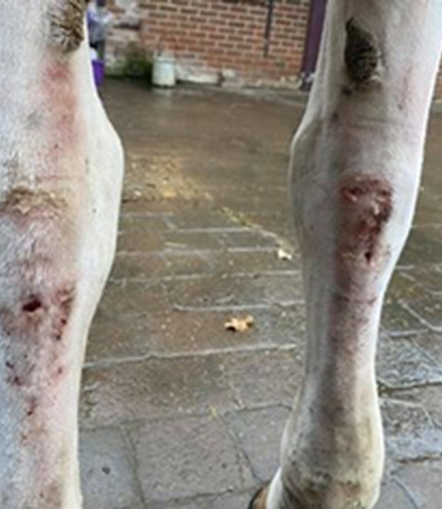

Managing mites
Feathered horses are often prone to leg mite infestations, this causes them to have very itchy legs and they can end up self-mutilating/harming with trying the relieve the itch by scratching.
It is extremely difficult to eliminate leg mites due to the likelihood of reinfestation from other horses and the environment, so monitoring for early symptoms and prompt treatment are required to prevent secondary issues and infections occurring. There are a few ways to deal with mites, sometimes a combination of methods may be needed.
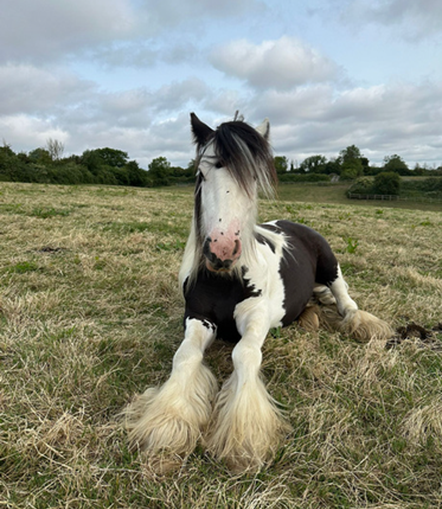
Some treatment options are;
- A vet may administer Doramectin - ‘Dectomax’ which is a wormer injection similar to ivermectin. Although not designed for horses, it is commonly used, seems safe and generally works well. Two injections (under the skin or into muscle) two weeks apart are often given.
- A vet may prescribe Fipronil (Frontline) as topical anti-parasite spray treatment applied directly to the feathers, again this must be repeated after two weeks to cover any hatching eggs. This can be a superior treatment method due the larger area that can be covered with a spray application.
- Frontline pipettes can be purchased without prescription and the solution administered onto the skin on the bulb of the heel and at the back of the knees/hocks, however application is not as distributed over the affected area as it would be with the spray.
- Products containing permethrins and used as a wash will kill mites and control numbers when applied every 2 weeks. A vet may suggest this treatment alongside Dectomax injections.
For stubborn cases it may be worth discussing with your vet the use of ivermectin pour-on cattle dewormer treatment as follows;
- 5ml base of mane, 5ml base of tail
- 5ml per leg. Part feathers and be sure to place directly on the skin in serval places per leg at ergot, inside pastern, at heel bulb, coronary band, behind knee / hock
- Repeat in 14-21 days to kill new hatch
It is important to note that this product is not licensed for horses and may have adverse reactions so this treatment option must be approached with caution. Ivermectin injections can have severe side effects on horses so is not recommended for the control of leg mites.
Preventative Management
- Washing with an anti-parasite shampoo and when dry applying an anti-feather mite powder. This is only suitable for mild problems or preventative care. It is important to repeat this around 10-14 days later so if there are mites present as it will catch any which have hatched since the first application.
- It is important to keep indoor environments very clean. After an infection is spotted make sure all bedding is removed and the stable thoroughly disinfected at each stage of the treatment – otherwise your horse could easily pick mites up from their surroundings again.
- Straw and deep litter beds may not be suitable as they provide opportunities for reinfestation, so it might be best to consider using shavings and/or rubber matting or live out as much as possible.
- If possible treat other horses on the premises to reduce opportunities for reinfestation.
- When washing the feathers use a shampoo that has anti-parasitic properties.
- Routine application of mineral oil (pig oil) and sulphur.
- Lime Sulphur washes will control mite numbers but will stain clothes and smells like rotten eggs so is not very popular.
- Selenium Sulphide shampoos will control mite numbers and help lift crusty skin and reduce scurf.

There are many websites and forums dedicated to the management of feathered horses . Some Facebook groups may have good advice, although always research treatments options and discuss with a knowledgeable person such as your vet or the HorseWorld Welfare and Rehoming teams.
Contact
Our welfare and rehoming teams have a wide knowledge and experience of caring for feathered horses. We are here to support you with your horse or pony. If you should need any advice, please don’t hesitate to get in touch.
Tel: 01275 893022 (Welfare & Rehoming)
Email the Welfare Team: welfare@horseworld.org.uk
If your horse is a rehomed HorseWorld horse, you may prefer to speak to the Rehoming team.
Email the Rehoming Team: rehoming@horseworld.org.uk
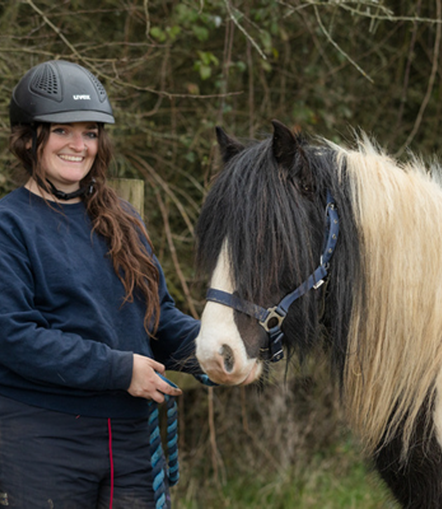
If you'd like to download and print this information, a PDF version is available below.

